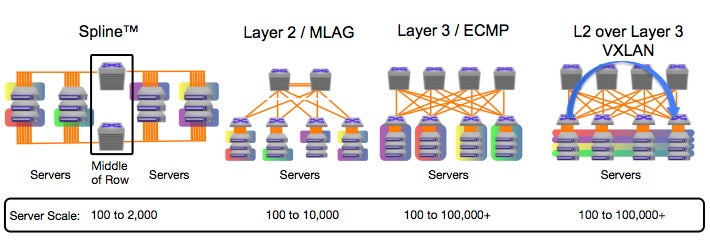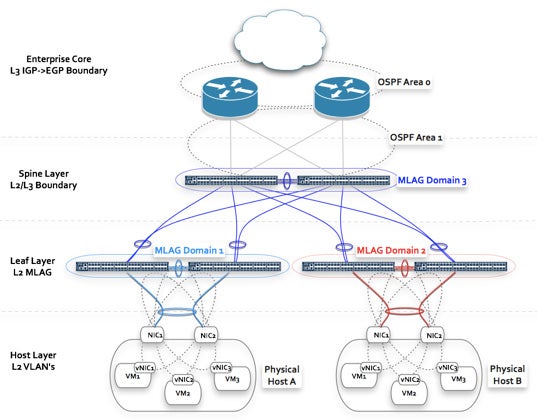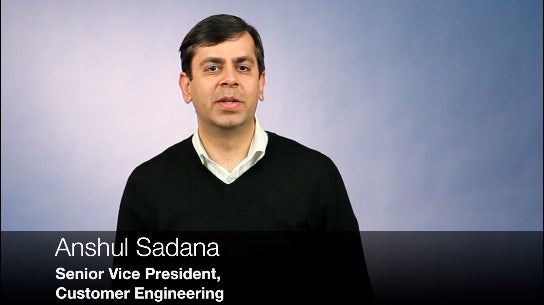IT is tasked with building data centers that deliver performance for east-west traffic for big data processing, responsiveness to rapidly changing business services needs, while minimizing operating expenses. Arista EOS is the foundation for scalable, high performance data centers and cloud networks without lock-in from proprietary protocols and fork-lift equipment upgrades. Arista cloud architectures scale from 100 to 100,000+ compute and storage nodes.
Scale to Meet Any Need
- Scale for the most demanding environments, from 100 to 100,000+
- Management and provisioning at scale with Arista EOS visibility applications and automation capabilities
- Scale to 1,000s with Spline (TM)
- Scale to 10,000 with MLAG
- Scale to 100,000+ with ECMP or VXLAN
Spline™ Architecture for High Density, Direct Attached Hosts
The Arista Spline™ architecture scales up to 2,000 directly attached compute and storage nodes. This large single tier enables densely deployed applications such as: IP and Ethernet storage, next generation file systems, distributed compute, and virtualization and clouds managed with VMware, OpenStack and Microsoft orchestration. Arista Spline™ on the Arista 7250X Series offers high density 10 GbE ports downstream and 40 GbE or 100 GbE ports upstream (on 7300X).
Multi-Chassis Link Aggregation Groups (MLAG)
MLAG enables the network administrator to use all interconnects in an active/active, Layer-2 topology.
- Ports remain active/active, while STP only kicks in during a misconfiguration.
- Maximized cross-sectional bandwidth and fast failover times measured in 100s of milliseconds for link or nodal failure
- Effective at almost any layer of the network including the leaf layer, Spline™, and spine/aggregation layer
ECMP and VXLAN for 100 to 100,000+
ECMP and VXLAN leverage Layer 3 for scaling cloud networks. VXLAN is a tunneling mechanism that runs between virtual or physical switches and enables applications to be deployed and moved between any server within the Data Center regardless of IP subnet or physical host location.
- EOS supports robust Layer 2 and Layer 3 protocols with multicast support across the entire networking portfolio
- Arista VM Tracer with VXLAN Extensions gives both virtual machine mobility and visibility into the tunneled network for management and troubleshooting

Multi-Chassis Link Aggregation (MLAG)
MLAG enables the network administrator to use all interconnects in an active/active, Layer-2 topology. MLAG and Spanning Tree can work together - ports remain active/active, while STP only kicks in during a misconfiguration. This enables an increase in cross-sectional bandwidth, and faster failover times measured in the 100s of milliseconds for link or nodal failure.
MLAG can work at almost any layer of the network - to interconnect servers in an active/active topology to the leaf layer, Spline™, or from the leaf layer to the spine/aggregation layer. The MLAG can contain up to 16 ports, providing enough throughput to build very large leaf/spine or Spline networks for over 10,000 servers.

Figure: MLAG applications in different layers of the network

